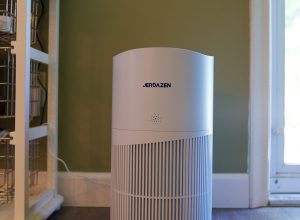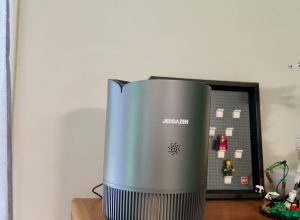Disclosure: This is a sponsored post, we were compensated to publish this article on our website.
50 years ago, on July 20, 1969, American astronauts Neil Armstrong and Edwin “Buzz” Aldrin landed on the Moon for the first time in human history. It was the 11th manned flight to the Earth’s natural satellite within NASA’s Apollo program, adopted by the USA government in 1961 and lasted 14 years.
17 missions were undertaken within the Apollo project during which the astronauts made 6 successful landings on the lunar surface. Apollo 13 failed, exploding when it was approaching to the satellite but the crew managed to save themselves and return to the Earth in the lunar module. The last Moon landing took place on 11 December 1972. In total, the Apollo expeditions delivered 382 kilograms of lunar soil samples to the Earth.
An interesting fact of the first landing on the Moon was that there were no handles on the outer side of the lunar module door, so astronauts Armstrong and Aldrin, going to the moon’s surface, had to make sure that the door was not closed and they were able to get back to the spaceship.
The name of the lunar program was invented by the NASA engineer Abe Silverstein. Later he told that he invented it, sitting at home and thinking about the God Apollo, who flew to the Sun on his chariot.
NASA Director Jim Brandenstein: “We are flying to the Moon to stay on it“

Today, 50 years later, the Americans resume the lunar program, giving it the name of the sister of the Sun God, the goddess of the Moon – Artemis. This time, the USA ambitions go much further than landing on the lunar surface and getting the soil samples. It’s planned not only to return the astronauts to the satellite but also to land them in several parts of it, including the areas where have never borne a human footprint — at the South pole.
Thanks to Artemis project, NASA plans to ensure a sustainable human presence on the Moon by 2024 for new research and discoveries and to lay a firm foundation for the building of the lunar economy with the help of private companies.
The ultimate goal, according to NASA Director Jim Brandenstein, is to create a space base on the Moon, which in the future will become a launching pad for flights to Mars. Initially, the project was created for 10 years but Donald Trump set the task to reduce the time by half.
Artemis – stage 1: CLPS
Artemis project will be held in several stages. The first is “Commercial delivery of useful goods to the moon” (CLPS – Commercial Lunar Payload Services).
In 2018, NASA selected 9 aerospace companies out of 50 to deliver scientific and technical equipment to the earth satellite. In addition to the Grand Lockheed Martin, the list includes 8 promising space startups, including Firefly Aerospace.
The owner of the company is a businessman Max Polyakov, and an international team of scientists and engineers from the United States and Ukraine was working on the creation of its launch vehicles. Today, Firefly is ready to offer to the market of space launch services a light launch vehicle Alpha which has a payload up to 1 ton, and in 2020 plans to launch a carrier rocket of the middle-class Beta, delivering to a sun-synchronous orbit of up to 4 tons.
In June 2019, NASA presented the first three companies, which it will sign the contracts with for the delivery of goods to the Moon.
4 cargoes for $ 97 million will be delivered by Orbit Beyond. Until September 2020, the company must land its vehicle in the Sea of Rains, located on the north-western side of the Moon, visible from the Earth. Astrobotic Technologies company, which has a contract for $80 million, will deliver 14 cargoes to the Lake of Death by July 2021. Intuitive Machines is obliged to land in an Ocean of Storms with five cargoes on board, which will cost $ 77 million to NASA.
The exact list of cargoes will be made by the end of summer. It is expected to include navigation instruments, local radiation meters and testers for various scientific experiments.
This is only the first stage of the CLPS program. Later, NASA will provide several more tenders between the participants who were chosen, which means that the other 6 companies will also find work. Intuitive Machines is already planning to use a launch vehicle Firefly Beta for the delivery of goods to the Moon when the final tests will be done. This was announced by Tom Markusic, the CEO of Firefly.
“Combined with our beta launch vehicle and partnership with Intuitive Machines, Firefly will provide a comprehensive offering of lunar services from the launch pad to the Moon’s surface. It’s an honor to join forces with NASA to expand space knowledge and to inspire a new generation of space entrepreneurs.”
In addition to Firefly of Max Polyakov and Lockheed, Deep Space Systems, Draper, Masten Space Systems and Moon Express will compete for the right to deliver goods to the lunar surface. In total, NASA plans to spend $4.2 billion on CLPS. Initially, this sum was $1.6 billion less. But the ambitious Donald Trump has increased funding, hoping to accelerate the processes of development of the Moon, and thus strengthen the hegemony of the United States in space.
Stage 2. “Gateway”, the program to protect the health of astronauts and Moon Race
In the next stage, the Artemis program involves preparatory work to ensure the safety of astronauts who will land on the Moon’s surface. It will be one man and one woman.
It’s planned to land the astronauts at the South pole of the Moon in 2024. The operation will take place by using the lunar station Gateway, which is going to be built in orbit of the satellite. The same station must become a launching pad for the expedition to Mars in the future. The mission to create a module for the “Gateway” is entrusted to Maxar Technologies. The module will provide the station with electricity and communication with the Earth.
Since the presence on the Moon is planned for a long time, one of the areas implemented within the Artemis project are programs aimed at protecting the health of astronauts. On April 30, 2019, NASA selected 12 companies ready to provide comprehensive solutions for the study of the health and working capacity of the astronauts during future long missions beyond low earth orbit. These studies include the effects of stress and sleep disorder in space on brain function, as well as immune system responses to simulated microgravity.
The program will help to prepare astronauts for the challenges they will encounter in the course of lunar missions and future missions to Mars.
Also, it is planned to involve a number of private companies into the Artemis project offering innovative solutions in the field of space exploration and technologies necessary for a permanent human presence on the Moon. The projects are chosen within the contest “Moon Race”, organized by Airbus Defence. The event includes 4 categories:
- production,
- raw material extraction,
- plant reproduction on the lunar surface,
- receiving and accumulation of electricity.
In particular, it’s been talking about the production of various items from lunar raw materials, the power supply on the Moon, water extraction and building of lunar greenhouses.
For example, the technology based on solar panels which are being opened similar to blinds can be used as a for manned missions to the Moon and Mars.
The final goal — the landing a man to the Moon backing him or her to the Earth again — will be carried out in 3 stages.
Stage 1 involves a test flight of a super-heavy launch vehicle SLS which will put a spacecraft “Orion” into lunar orbit.
Stage 2 involves a flight of the SLS Orion with the crew on board.
Stage 3 or Artemis-3 – astronauts landing to the Moon and their return to the orbital station “Gateway”.
Firefly Aerospace is the only international member of the Artemis project
The international aerospace company Firefly Aerospace, participating in the Artemis project, is a successful American-Ukrainian synergy of the technical experience and effective management, – Max Polyakov says.
“Previously, Ukraine was in the top 5 of space states, so the engineering potential remained at a high technical level. Since 2018, the Firefly R&D center has been fully working there, designing and testing individual components of Alpha and Beta rockets, as well as prototypes of the company’s first satellites,” Polyakov says.
For two years Firefly of Max Polyakov managed to obtain permission for launches from the USA air force Vandenberg cosmodrome in California, to sign agreements with several companies to provide launch services, in particular, with the British satellite manufacturer SSTL. All this has not gone unnoticed by NASA and allowed Firefly to participate in the Artemis program.
Max Polyakov: “It’s time to take a new step”
Max Polyakov noted the great importance of the revival of the lunar program.
“In December, Firefly is preparing to launch a light rocket Alpha, which will bring 6 Airbus satellites to LEO (low earth orbit, up to 200 km). Next in turn — the average rocket Beta and manned spacecraft Gamma. In addition, we plan to build our own remote monitoring satellites and lunar rover. That’s why, Artemis is one of the planned, but very important programs where our resources will be used. The small step that Armstrong took was a breakthrough for all mankind. It’s time not just to go back and repeat the success but to take a new step and pave the way for the development of Mars and other horizons,” Max Polyakov commented.
Disclosure: We might earn commission from qualifying purchases. The commission help keep the rest of my content free, so thank you!



